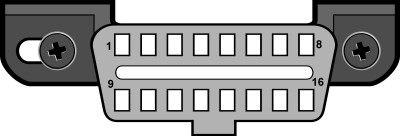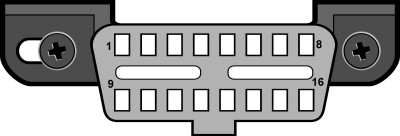For car owners and enthusiasts diving into vehicle diagnostics, understanding OBD2 compliance is crucial. If you’re wondering, is a 1998 Chevy Malibu OBD2 compliant? The answer is a definitive yes. Let’s explore why and what this means for you and your vehicle.
In the United States, OBD-II (On-Board Diagnostics II) became mandatory for all cars and light trucks manufactured for sale after 1996. This regulation was put in place to standardize vehicle diagnostic systems, primarily for emissions monitoring but expanding to cover various vehicle systems. Therefore, a 1998 Chevrolet Malibu, being a post-1996 model, is indeed OBD2 compliant. This standardization simplifies vehicle diagnostics and repair, making it easier to read and understand vehicle data.
To communicate, OBD2 compliant vehicles utilize several communication protocols. These protocols ensure that diagnostic tools can effectively “talk” to your car’s computer. Common OBD2 protocols include:
- J1850 PWM & J1850 VPW: Older protocols, often found in pre-CAN vehicles.
- ISO9141-2 & ISO14230-4 (Keyword Protocol 2000): ISO protocols are widely used in European and Asian vehicles, and some US models.
- ISO15765-4/SAE J2480 (CAN – Controller Area Network): The most modern and prevalent protocol, becoming mandatory for all vehicles in the US from model year 2008 onwards. While your 1998 Chevy Malibu is OBD2 compliant, it likely uses one of the earlier protocols, not CAN, as CAN wasn’t permitted in US cars until 2003.
Understanding the Diagnostic Link Connector (DLC) is also key. The DLC, your OBD2 port, is where you plug in a diagnostic scan tool. SAE J1962 defines two types of DLCs, Type A and Type B, primarily differing in their alignment tab shape.
Fig. 1 – J1962 Vehicle Connector, Type A
The standard Type A DLC is typically located within the driver’s compartment, within easy reach of the driver’s seat. SAE J1962 specifies it to be “in the passenger or driver’s compartment in the area bounded by the driver’s end of the instrument panel to 300 mm (~1 ft) beyond the vehicle centerline, attached to the instrument panel and easy to access from the driver’s seat. The preferred location is between the steering column and the vehicle centerline.”
Type B DLC offers more flexible placement options, potentially accessible from the driver’s seat, co-driver’s seat, or even outside the vehicle.
Fig. 2 – J1962 Vehicle Connector, Type B
To identify the communication protocol your 1998 Chevy Malibu uses, you can examine the pinout of its DLC. The presence or absence of pins at specific locations indicates the protocol.
Fig. 3 – J1962 OBDII Connector Pinout
Here’s a simplified table to help determine the protocol based on pin presence:
| Pin 2 | Pin 6 | Pin 7 | Pin 10 | Pin 14 | Protocol |
|---|---|---|---|---|---|
| Yes | No | No | Yes | No | J1850 PWM |
| Yes | No | No | No | No | J1850 VPW |
| No | No | Yes | No | No | ISO9141/14230 |
| No | Yes | No | No | Yes | ISO15765 (CAN) |



Remember that all OBD2 connectors should also have pin 4 (Chassis Ground), pin 5 (Signal Ground), and pin 16 (Battery Positive).
In conclusion, your 1998 Chevy Malibu is OBD2 compliant, allowing you to use standard OBD2 scan tools for diagnostics and maintenance. While it won’t use the modern CAN protocol, understanding the DLC location and potentially checking the pinout can further assist in effective vehicle communication and troubleshooting. This compliance is a valuable feature, empowering owners to better understand and care for their vehicles.